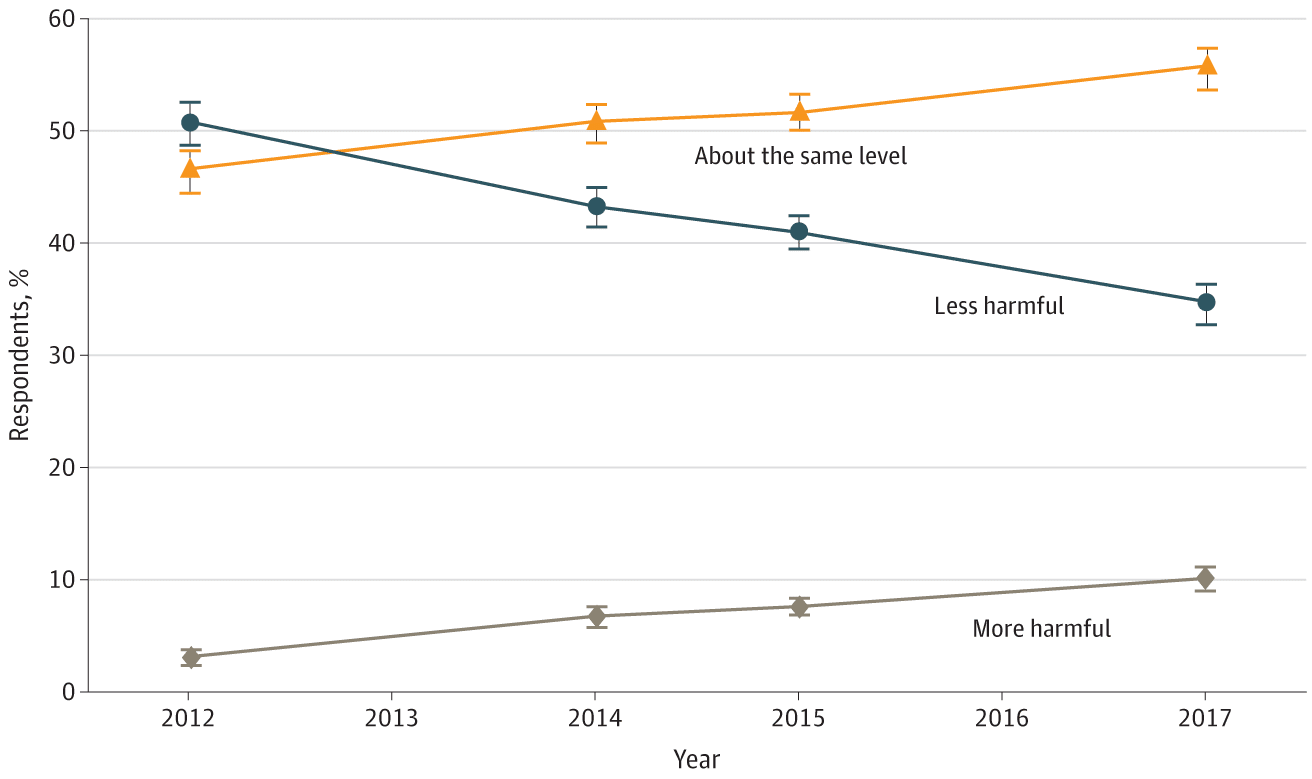On April 3, in one of Commissioner Scott Gottlieb’s final acts before departing on April 5, the US Food and Drug Administration reported in a “Special Announcement” that it has received an “uptick in voluntary reports of adverse experiences with tobacco products that mentioned seizures occurring with e-cigarette use (e.g., vaping).” Some of these allegedly occurred after “a few puffs or up to one day after use.” For the FDA, the slight jump could be “a signal [of] a potential emerging safety issue.”
Since 2018, the FDA reportedly observed a “slight but noticeable” spike in reports of seizures related to nicotine and tobacco products more broadly. That also happened to be the year when the administration’s enforcement actions kicked into high gear—with the headline-making raid on JUUL Labs in September, followed by controversial proposed bans on e-cigarette and tobacco flavors in November.
.@SGottliebFDA: “Today, FDA’s notifying the public of a potential emerging safety issue. We have reports indicating that some people who use e-cigs – especially youth and young adults – are experiencing seizures following their use of e-cigarettes.” pic.twitter.com/6jmZecFRPi
— U.S. FDA (@US_FDA) April 3, 2019
“Is this noise or is it a lot?” Clive Bates, former director of Action on Smoking and Health (ASH) and a leading tobacco harm reduction expert and advocate, rhetorically asks Filter.
To put the 35 reported cases in context, CDC data show that 3.4 million adults and 470,000 children live with epilepsy in the United States. The agency also found that 2.8 percent of adults were vapers in 2017. Assuming the populations are independent, Bates reasons that, “about 84,000 adult epilepsy suffers would also be likely to be vapers.”
“These are huge populations to generate just 35 recorded seizures between 2010 and 2019,” Bates tells Filter, noting that the reports seem to be incongruent with existing data.
Bates also questions why e-cigarettes are singled out in the first place, when the FDA acknowledges that nicotine—the compound present in both vaping and combustible tobacco products—could be at fault. “If we suppose there is genuine concern here and not a political, panic-inducing gesture,” he asks, “why would they restrict their investigation to e-cigarettes and not include all tobacco products?”
David Sweanor, an industry expert and chair of the Advisory Board for Centre for Health Law, Policy and Ethics at the University of Ottawa, has a possible answer: “This latest move from FDA looks like nothing more than abstinence-only fear-mongering.”
The claims of seizures associated with e-cigarette use are situated within an FDA that has worked hard under Gottlieb to limit access to vaping products in an attempt to clamp down on rising levels of teen vaping.
For Sweanor, these claims, as well as the FDA’s broader anti-vaping campaign, amount to misleading the public. “They have seen how the public has become ever more misinformed about the relative risks of vaping compared to cigarettes,” he writes. “They know this information perpetuates cigarette smoking and adds to the death toll.”
This assertion—that the US public increasingly sees vaping as comparable to or more harmful than combustibles—was recently demonstrated in a study published March 29 by the Journal of the American Medical Association (JAMA). A team of Georgia State University (GSU) public health researchers analyzed the results of two surveys that assessed adults’ perceptions of harm associated with e-cigarettes and combustible cigarettes as they changed every year, starting in 2012 and ending in 2017.
In short, they found that fewer and fewer adults, proportionally, perceived vaping as a tool for reducing harms, while more and more believed it to as harmful as cigarettes, or even more harmful. In reality, a 2015 independent evidence review by Public Health England estimated that e-cigarettes are about 95 percent less harmful than combustible tobacco.
One of the two US surveys, Tobacco Products and Risk Perceptions Surveys (TPRPS) by GSU’s Tobacco Center of Regulatory Science, found that the proportion of adults perceiving e-cigarettes as less harmful dropped by roughly 15 percent (from around 40 percent in 2012 to almost 34 percent in 2017). The other survey, Health Information National Trends Surveys (HINTS) conducted by the National Cancer Institute, showed nearly a 32 percent dip (from 50.7 percent in 2012 to 34.5 percent in 2017).

Both TPRS and HINTS found an increase in the proportion of adults perceiving an equal risk; the former documented that this view more than tripled in prevalence (from 11.5 percent in 2012 to 36.4 percent in 2017), while the latter recorded a 19 percent increase. Additionally, the rate of adults perceiving e-cigarettes to be more harmful than combustible cigarettes tripled in TPRS.
The JAMA study suggests a few reasons for these changes in public opinion. They include “consumers’ concerns about the risk of addiction and/or the uncertainty about e-cigarettes’ long-term health effects,” and questionable media portrayals that have downplayed the “relative risks” and amplified “absolute risks” associated with e-cigarettes.
The study concludes, “Our findings underscore the urgency to convey accurate risk information about e-cigarettes to the public, especially to adult smokers who are unable or unwilling to quit smoking, and therefore could benefit most by switching from cigarettes to e-cigarettes.”
This vital public health message, in the context of almost half a million annual smoking-related deaths in the US, continues to be undermined by the FDA.
Photo by Sarah Johnson/BlackNote.com via Pixabay





Show Comments